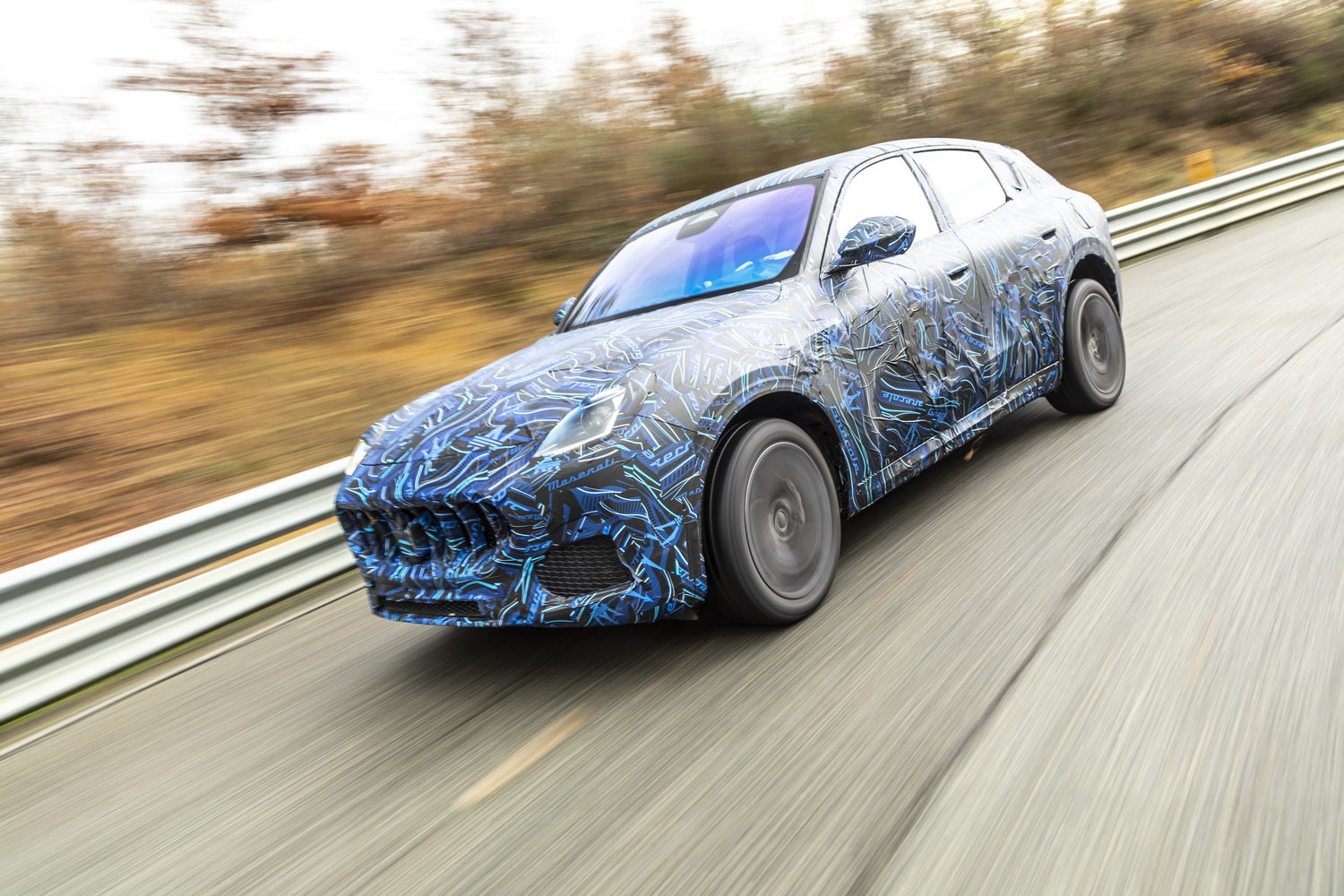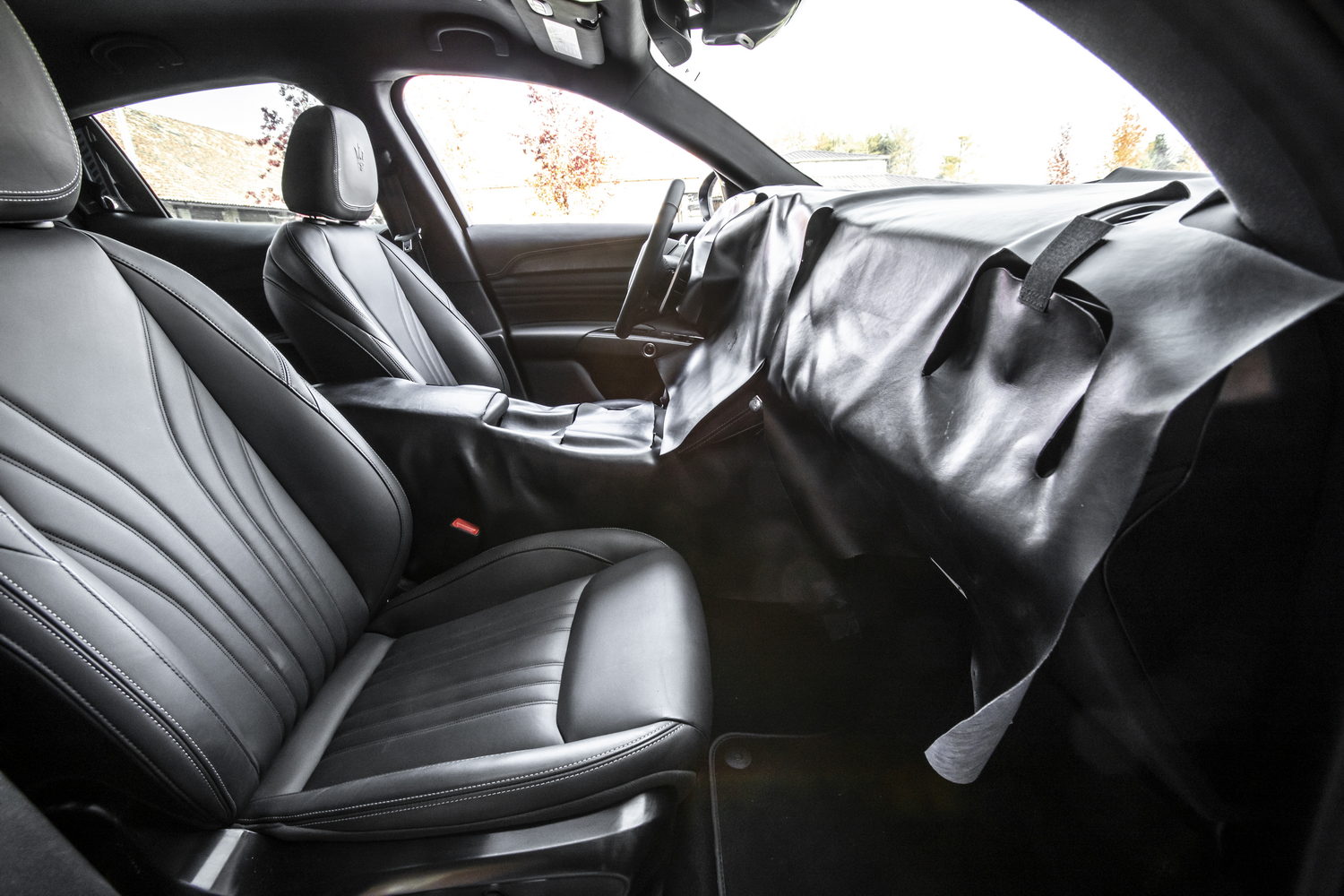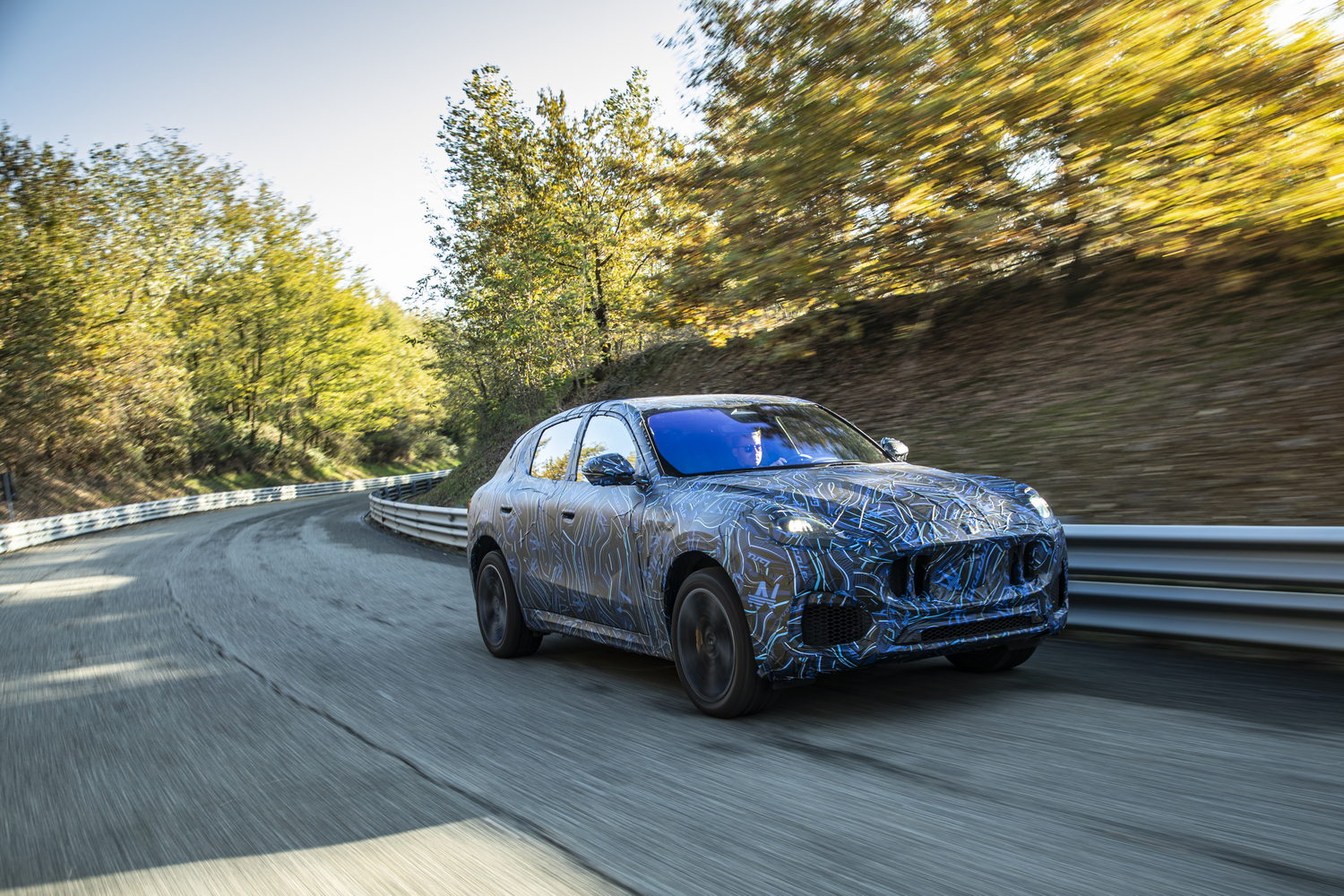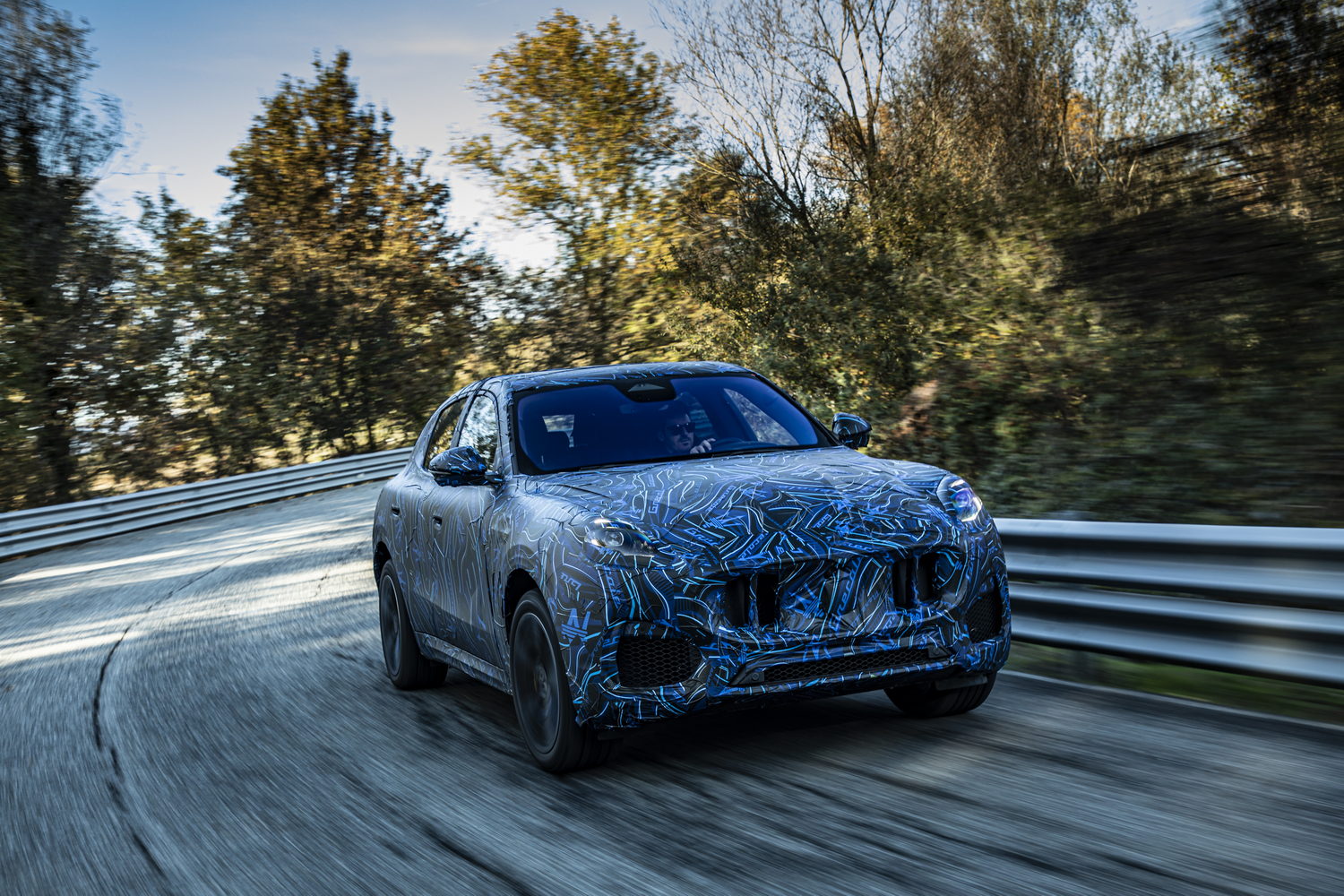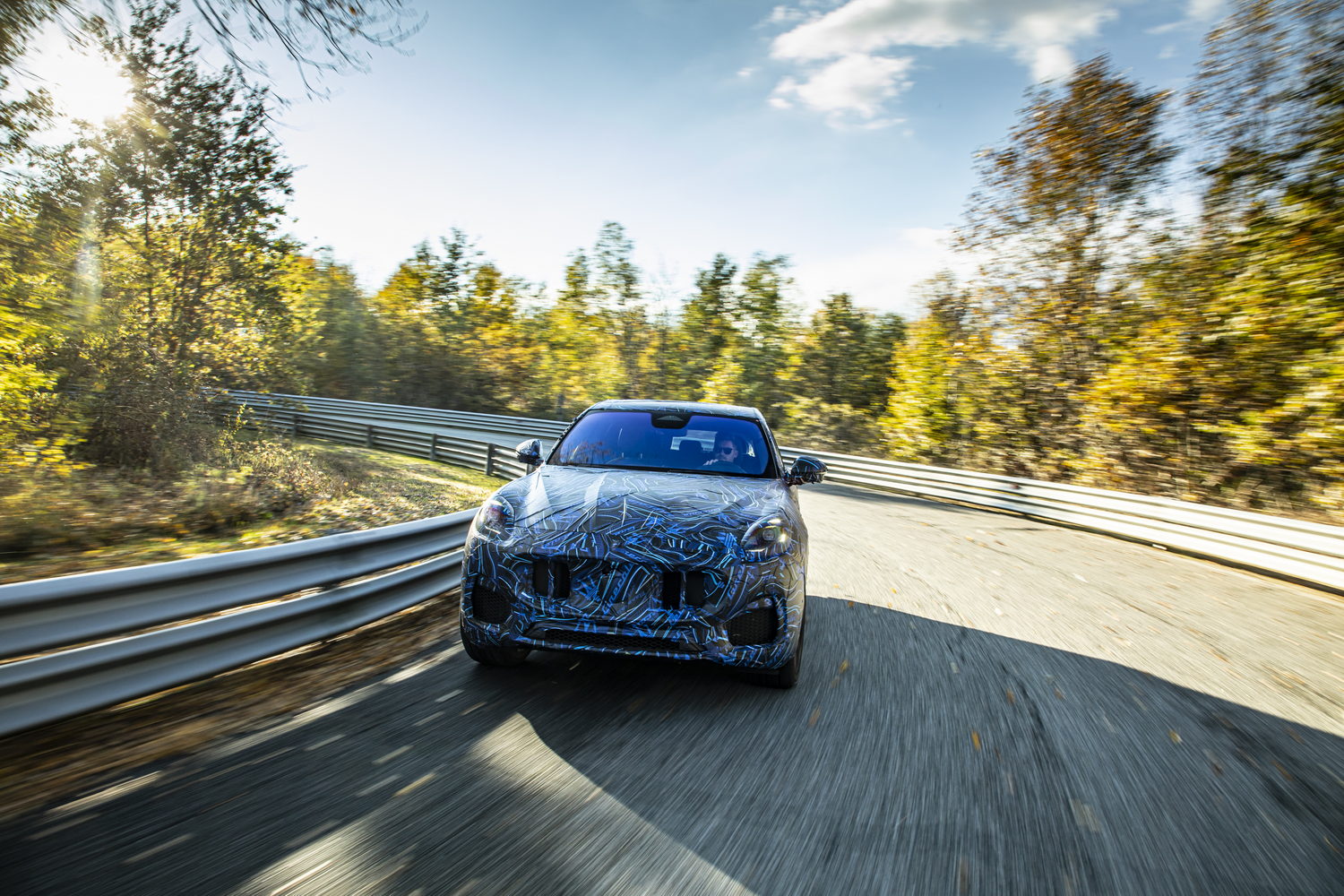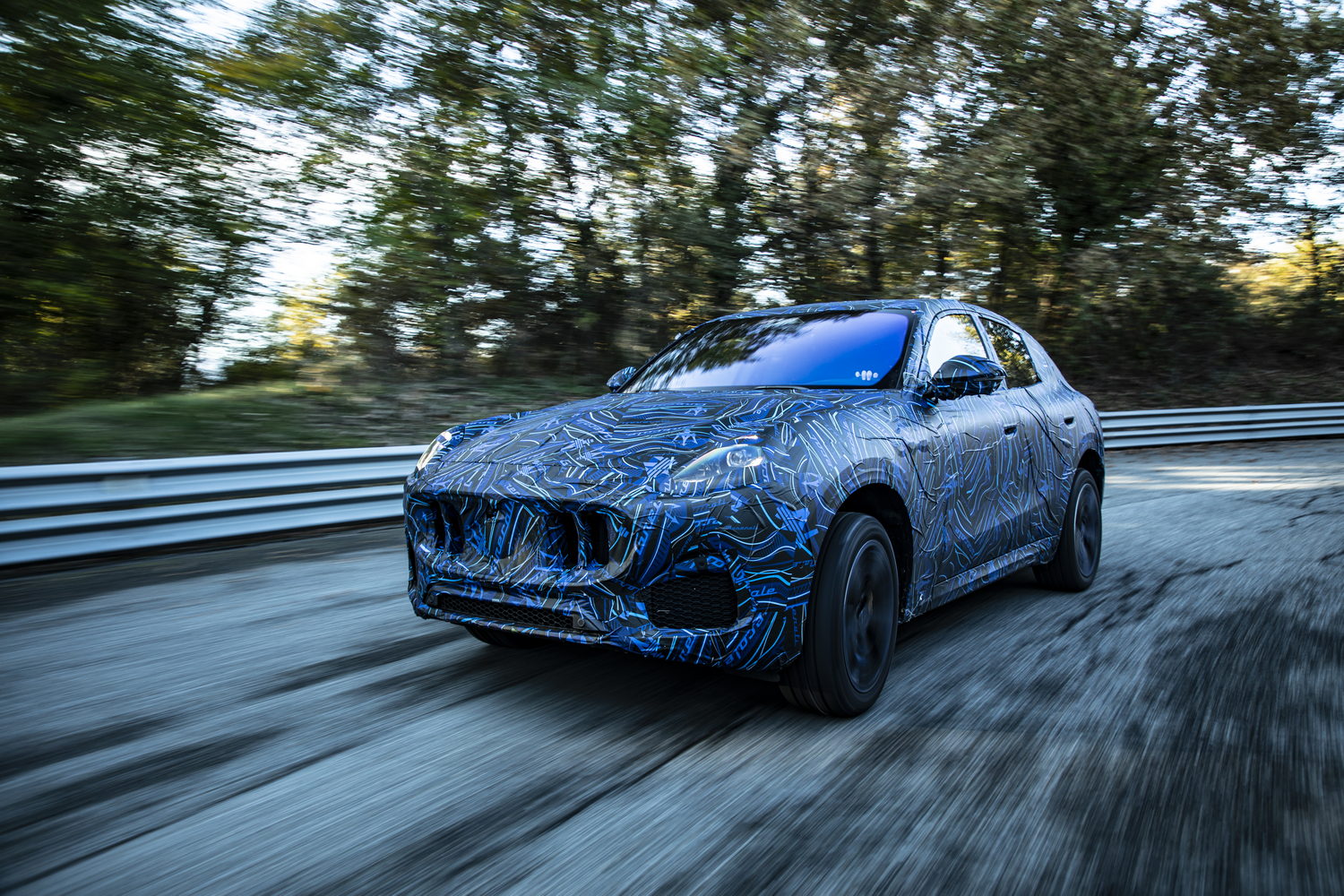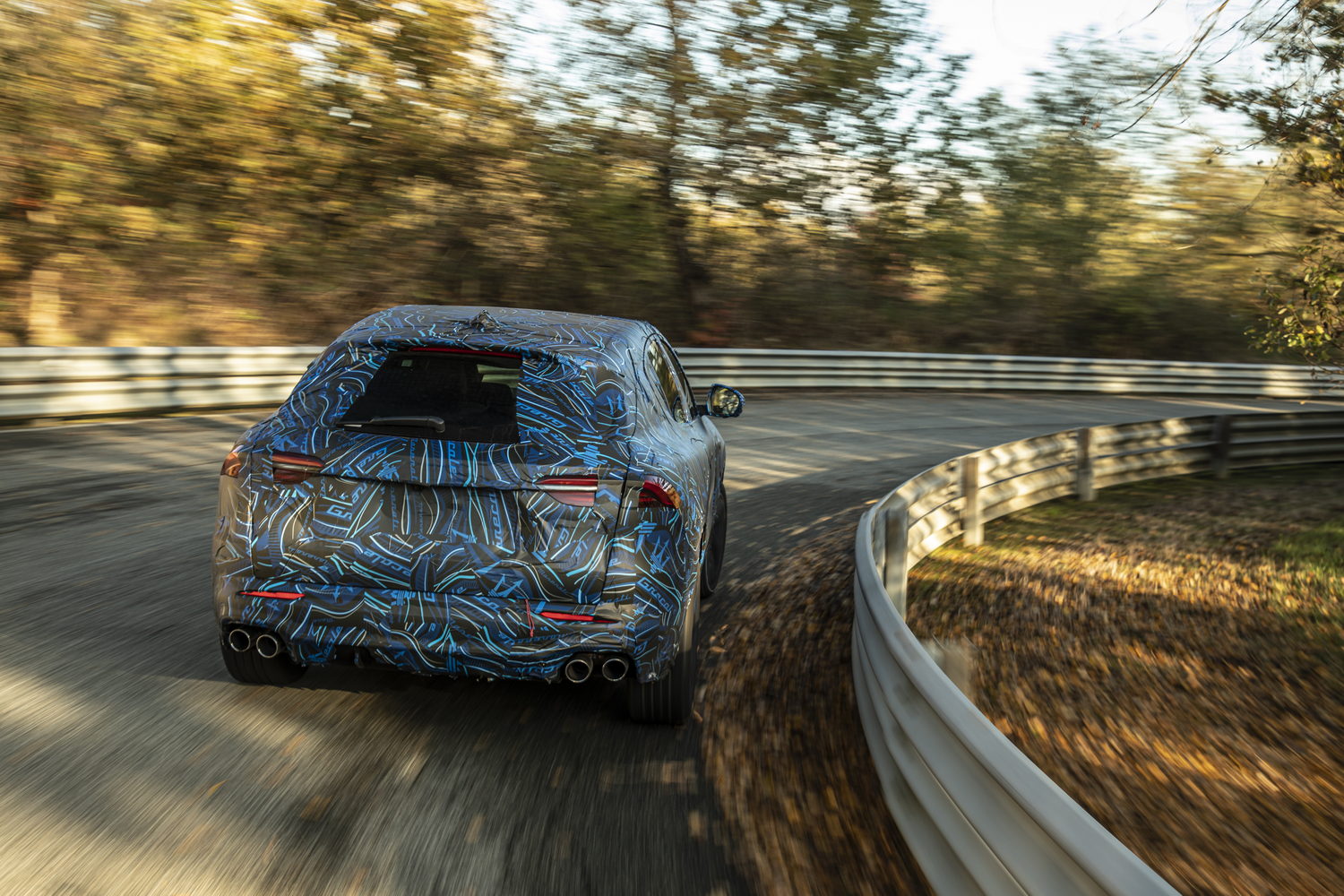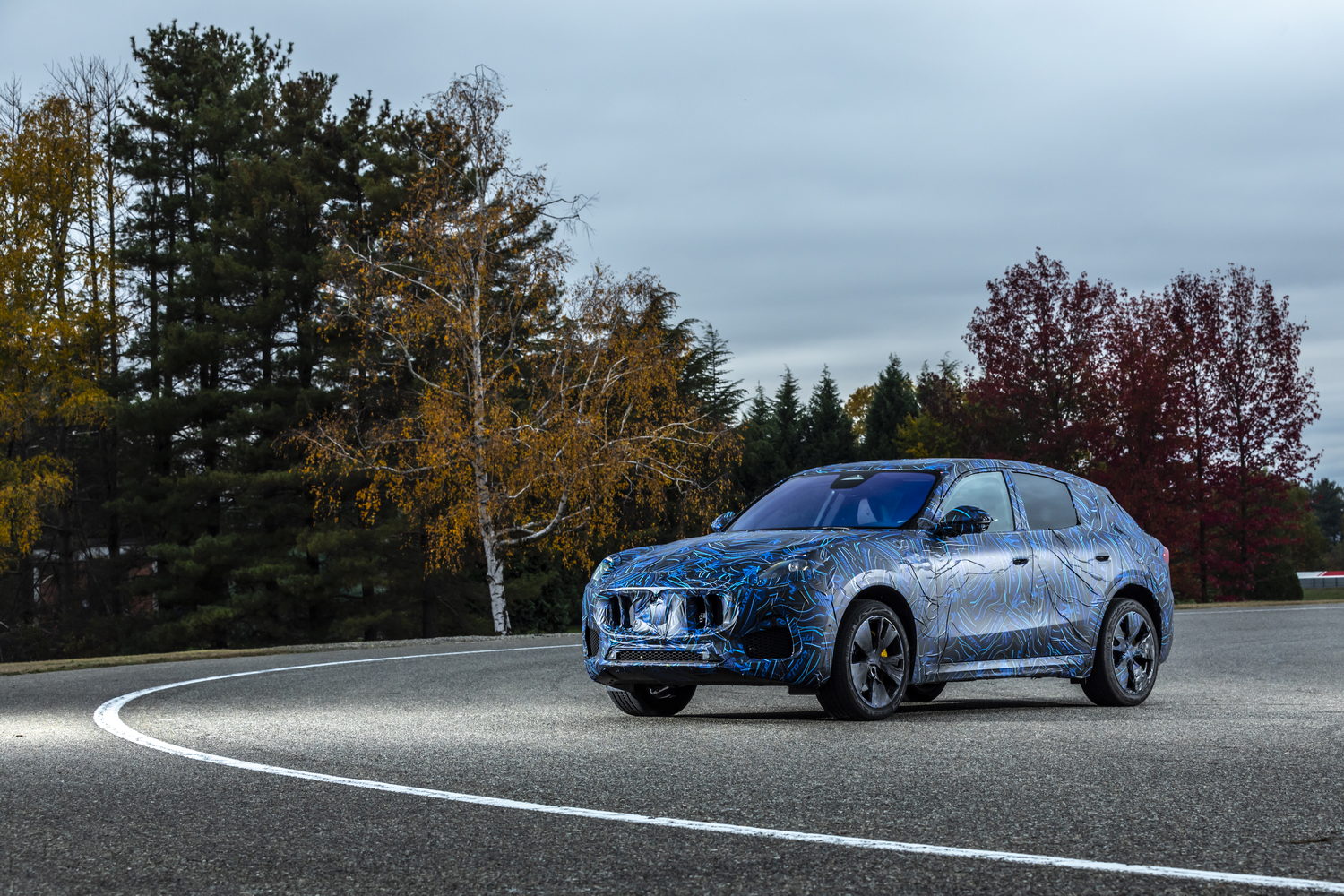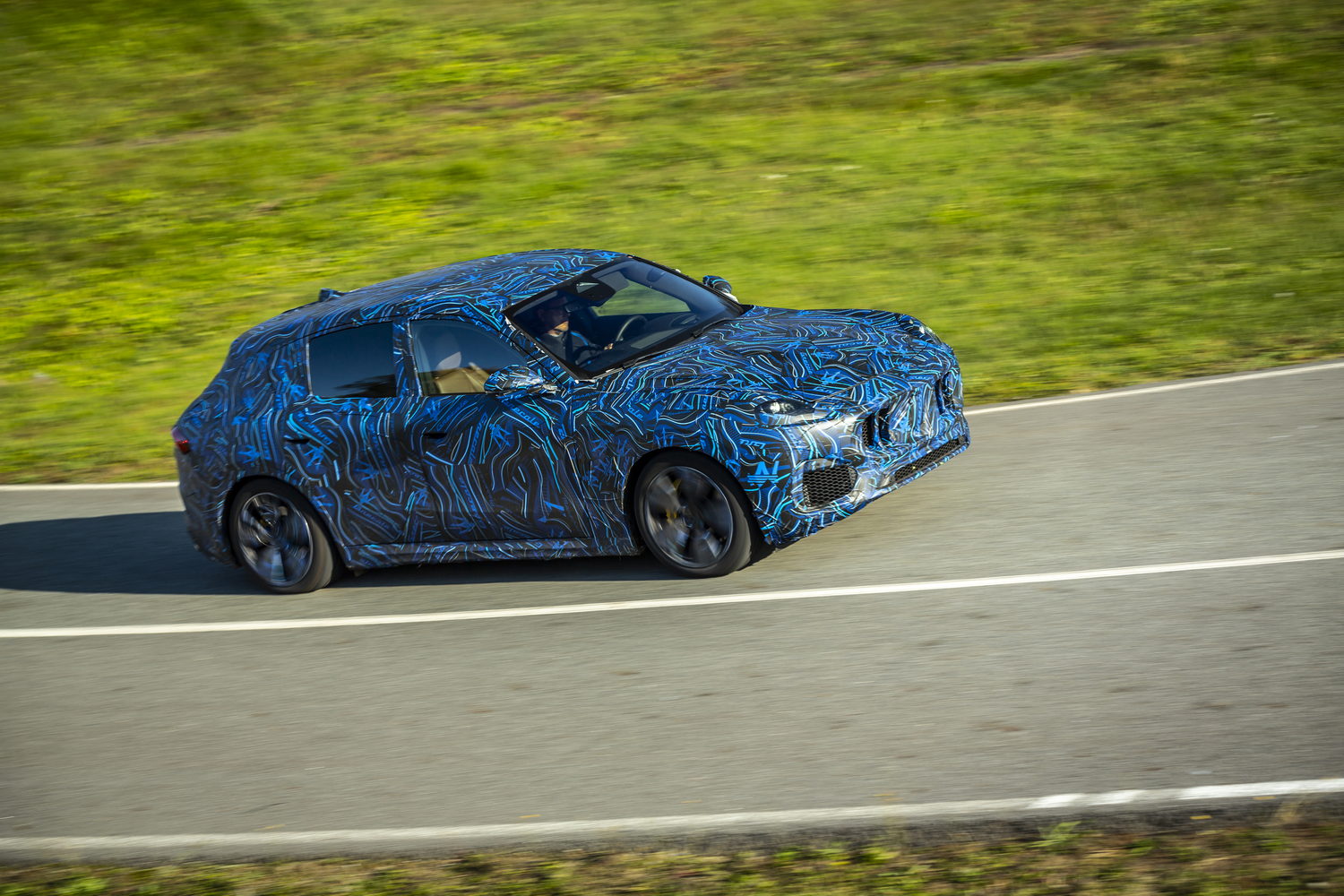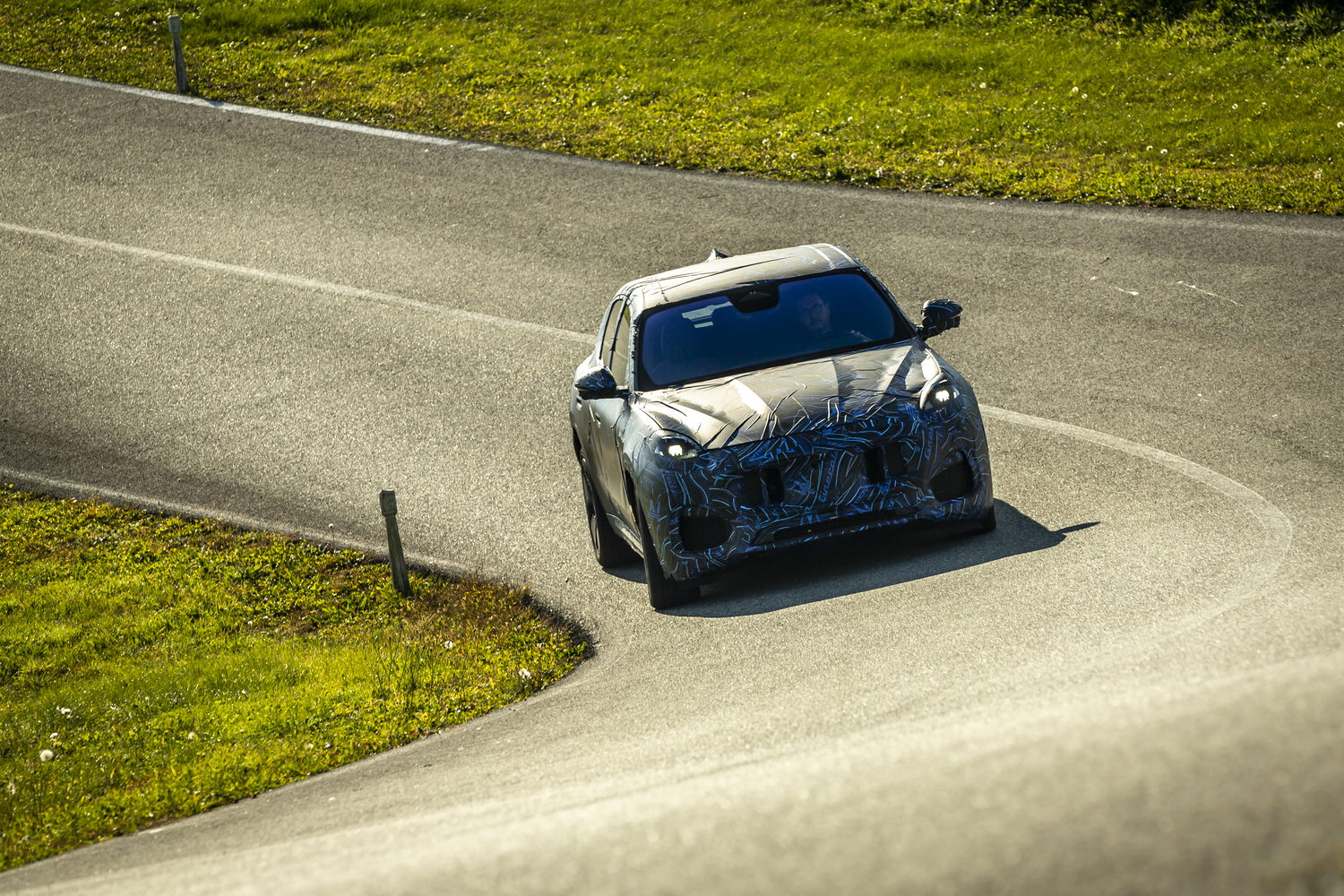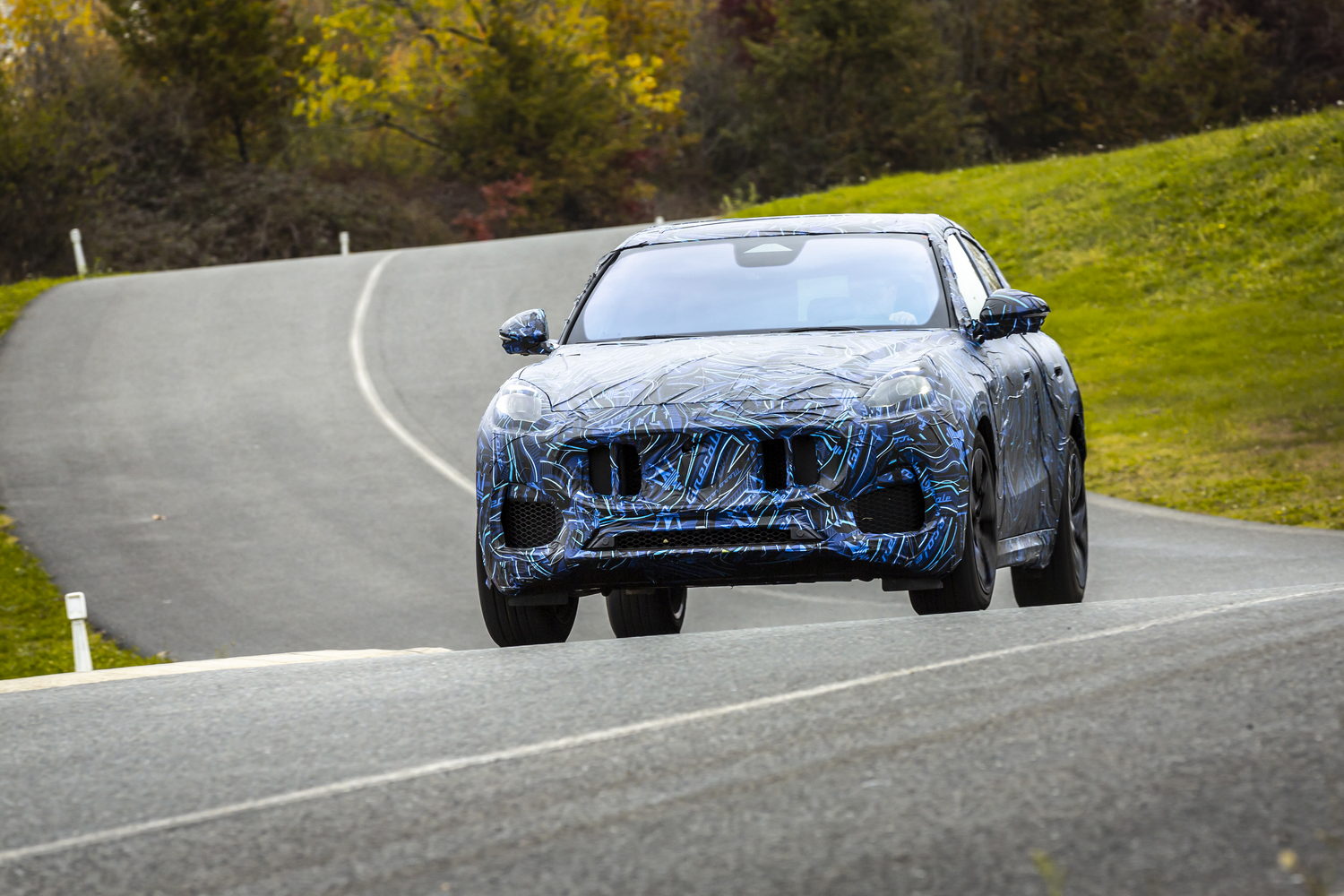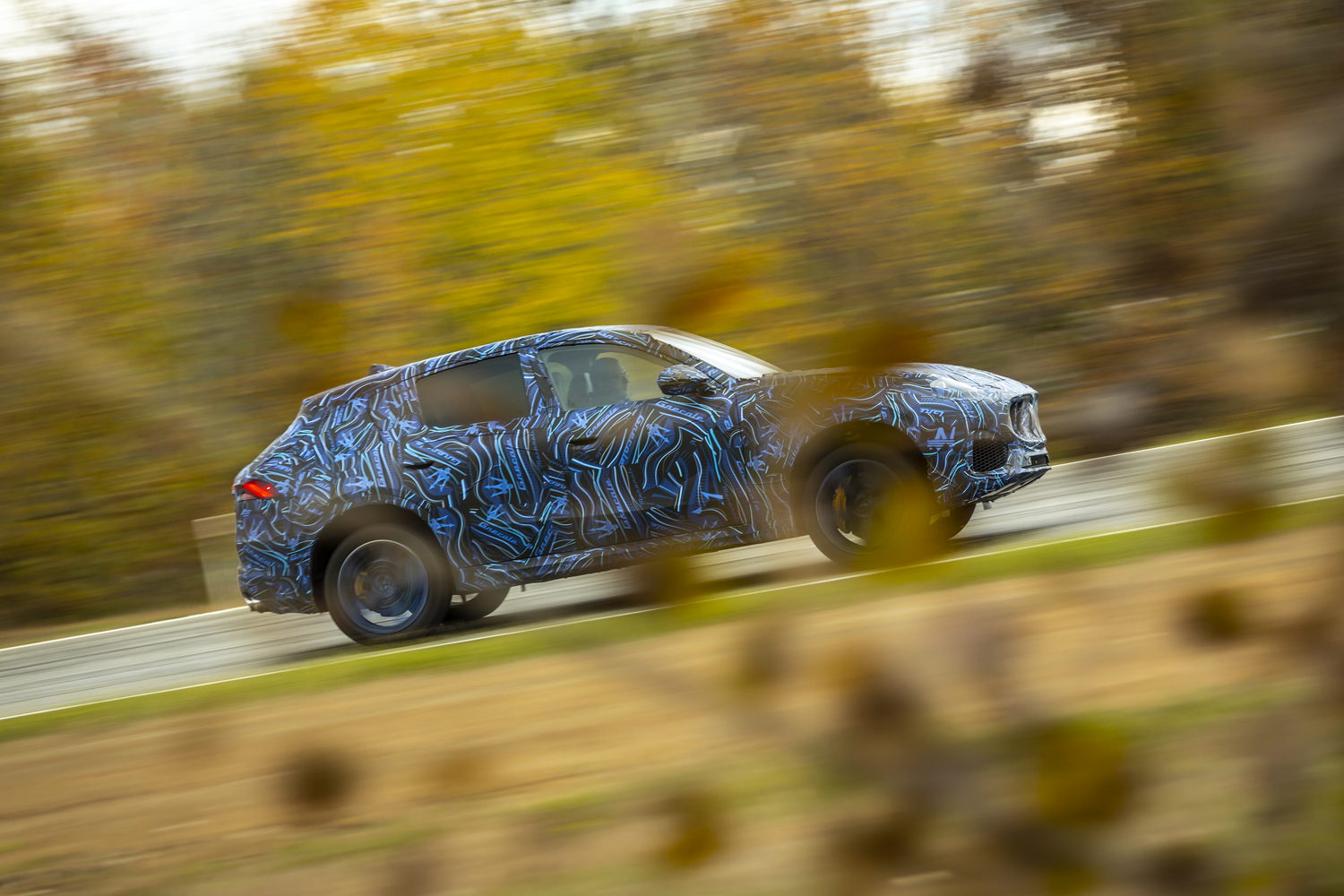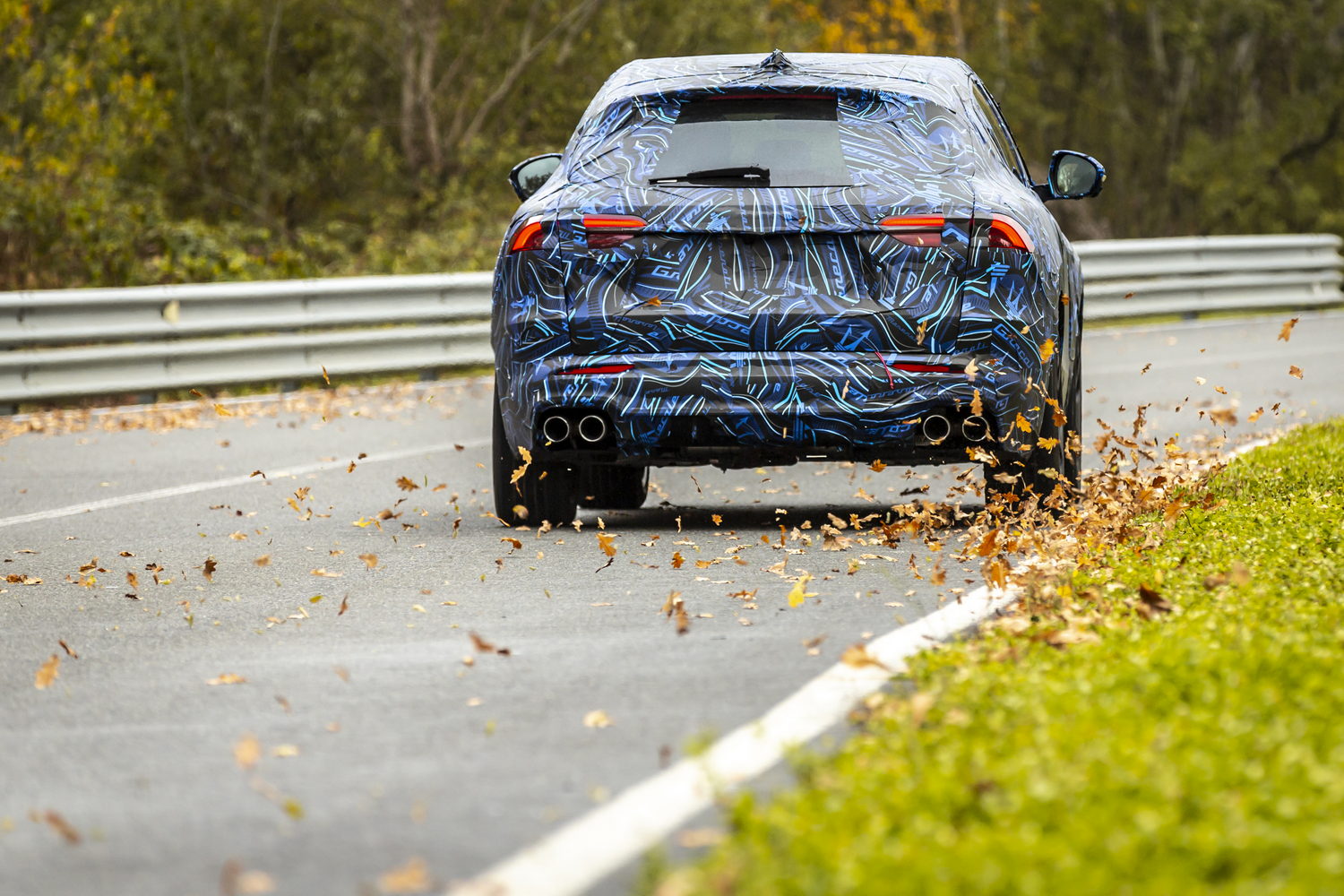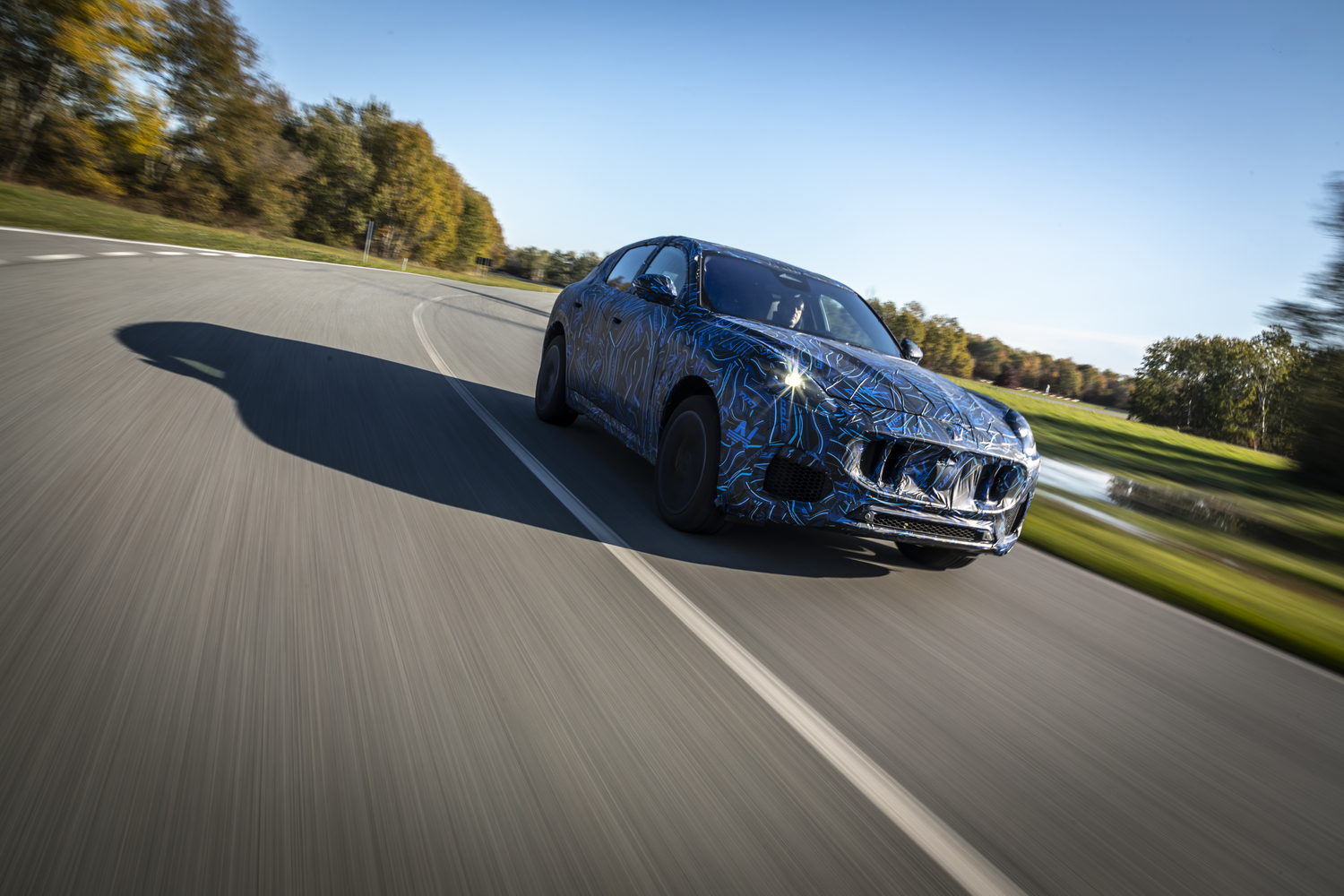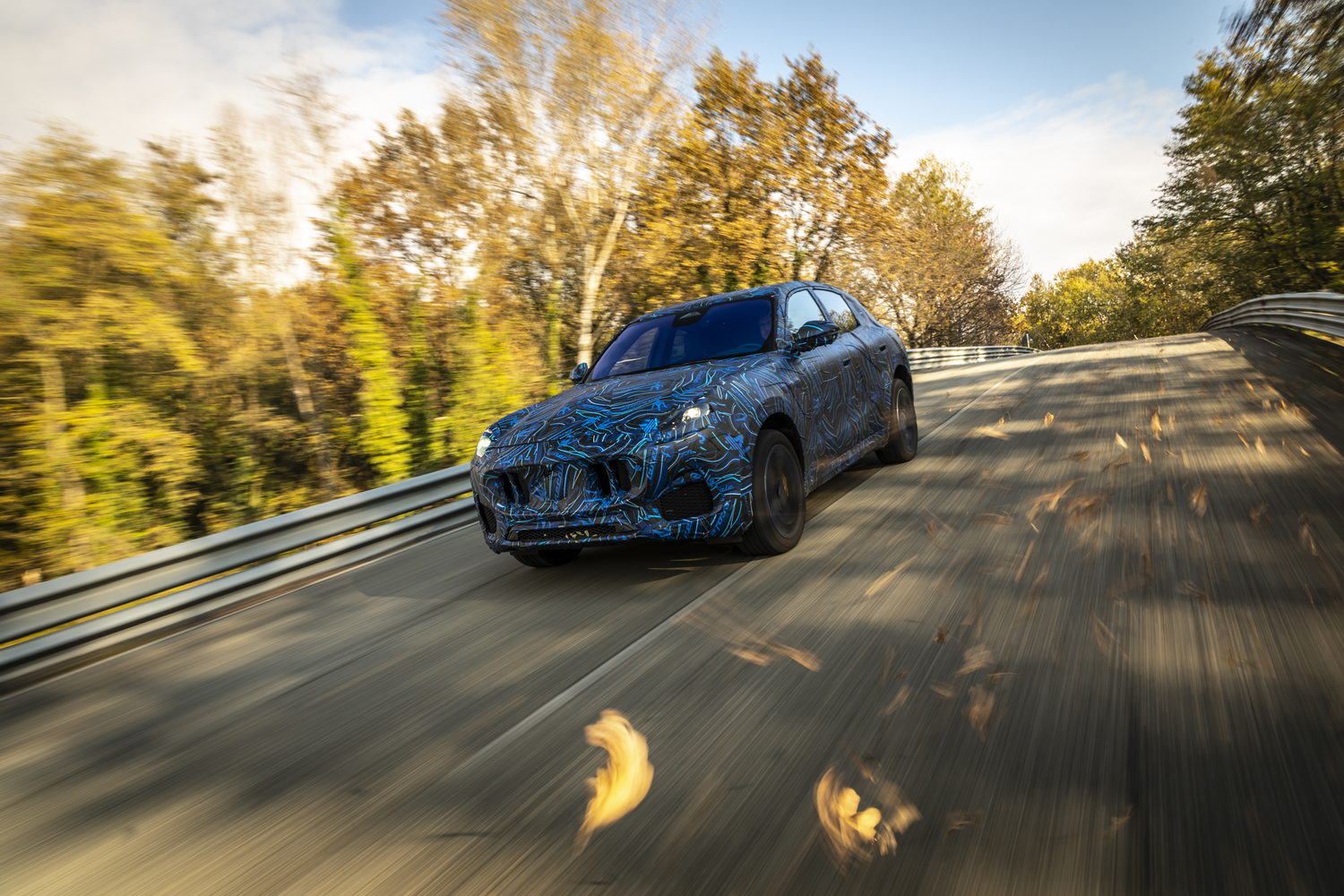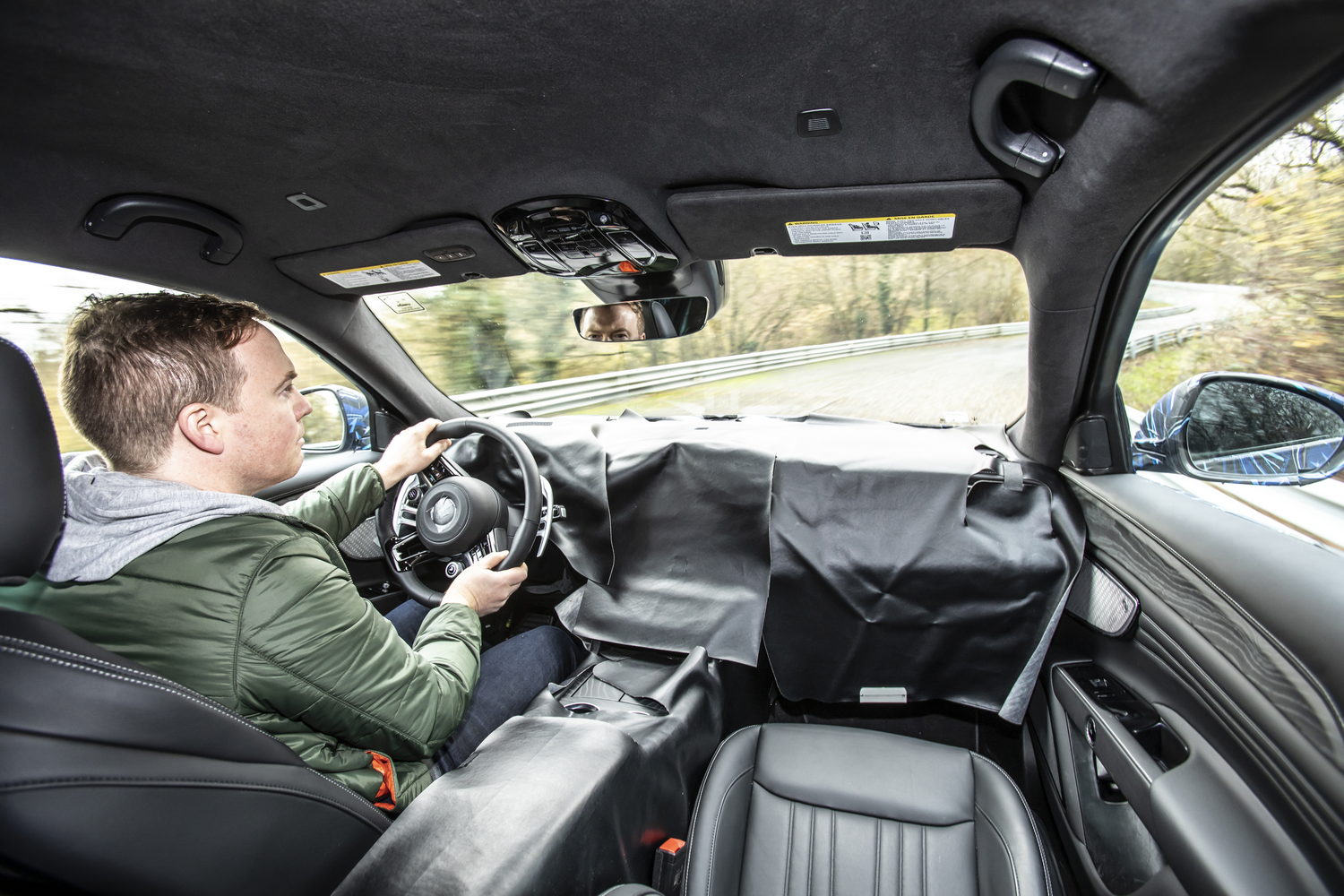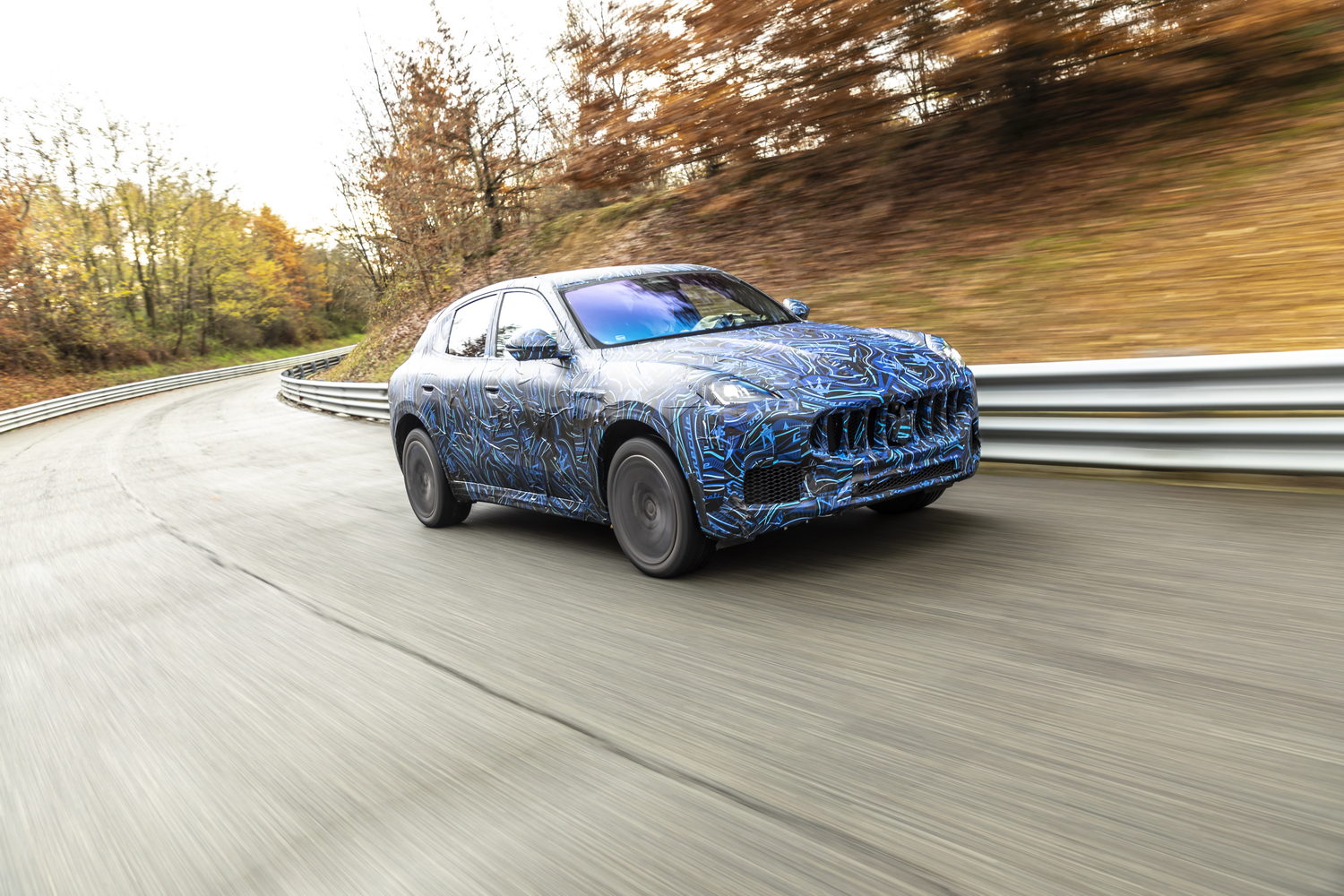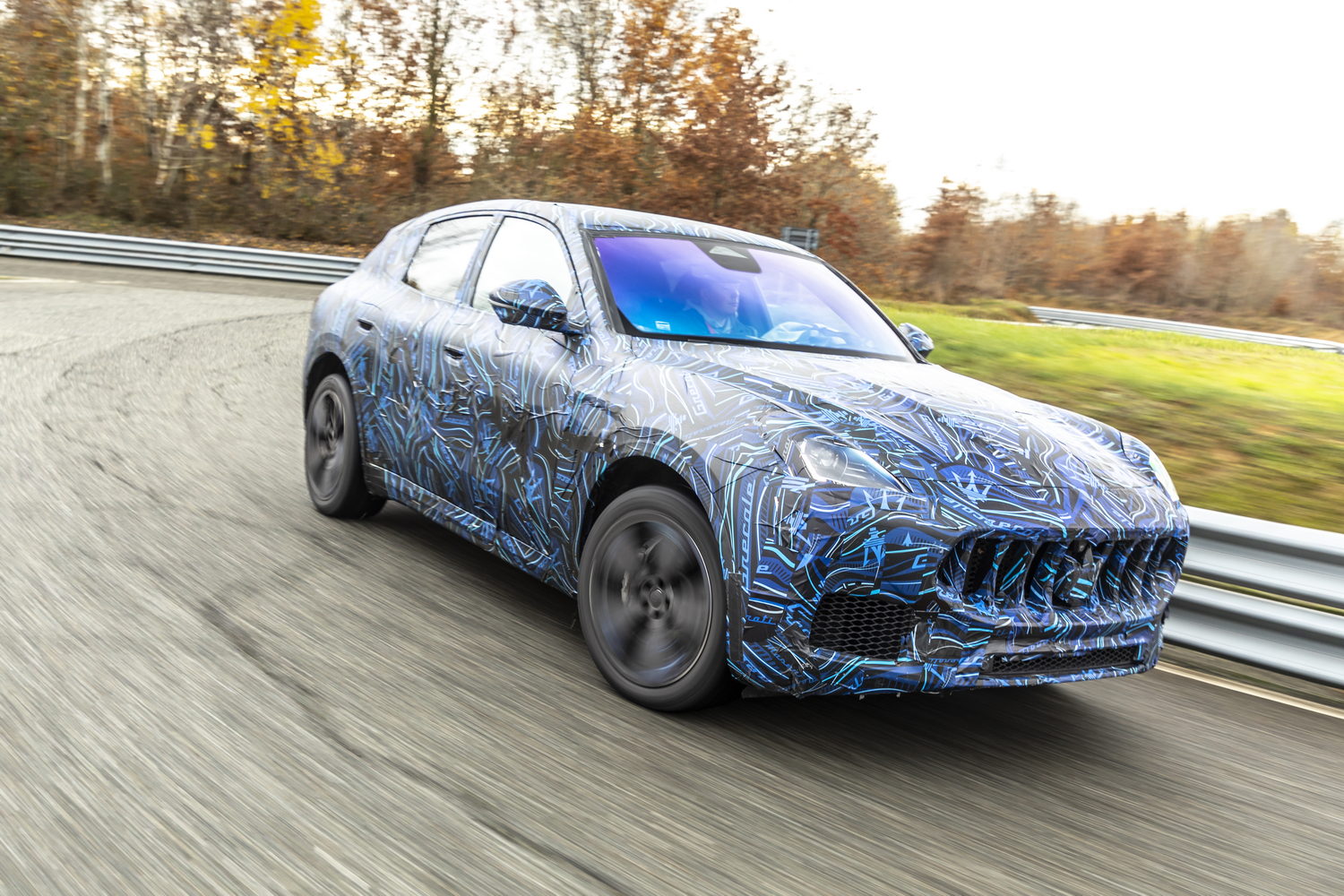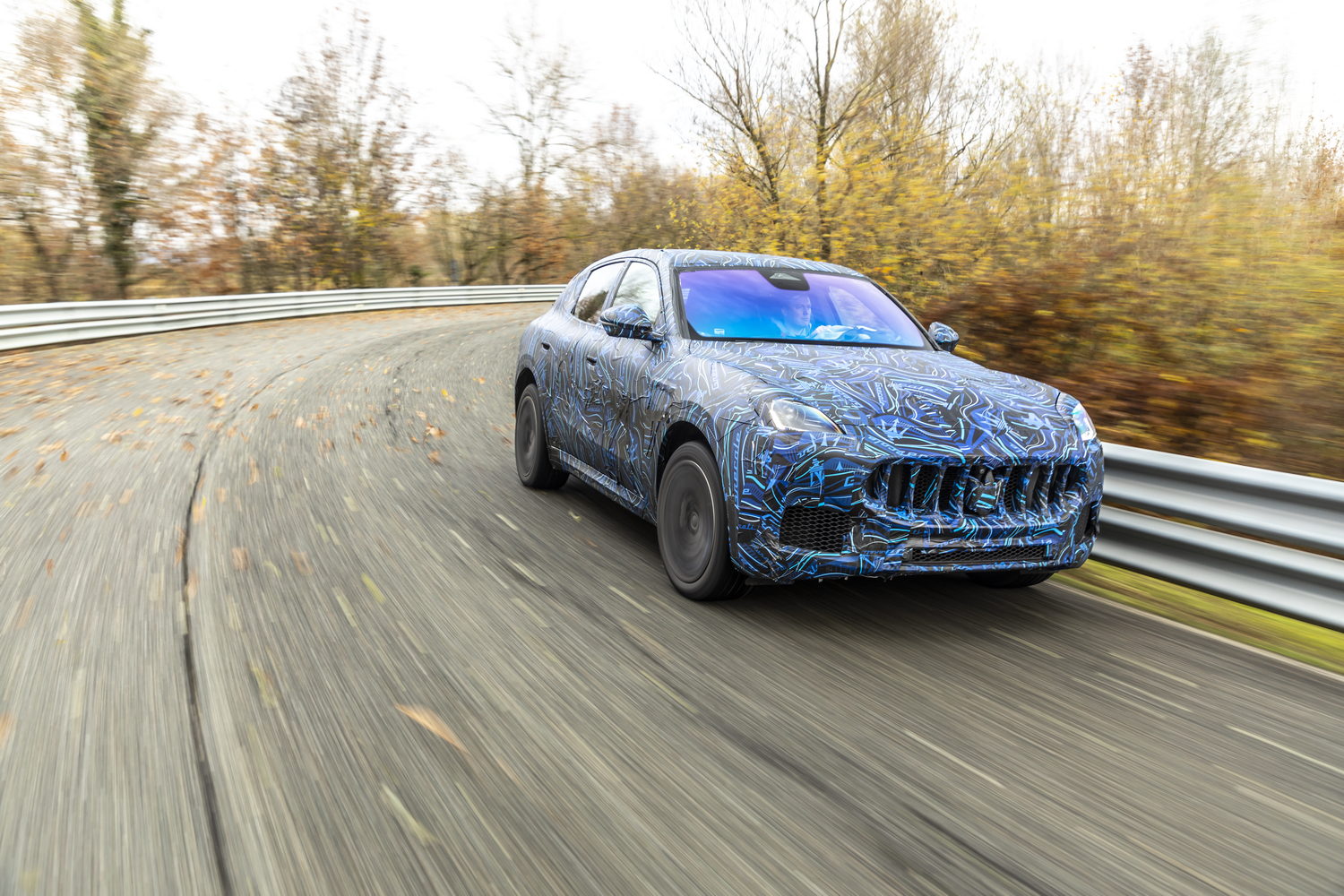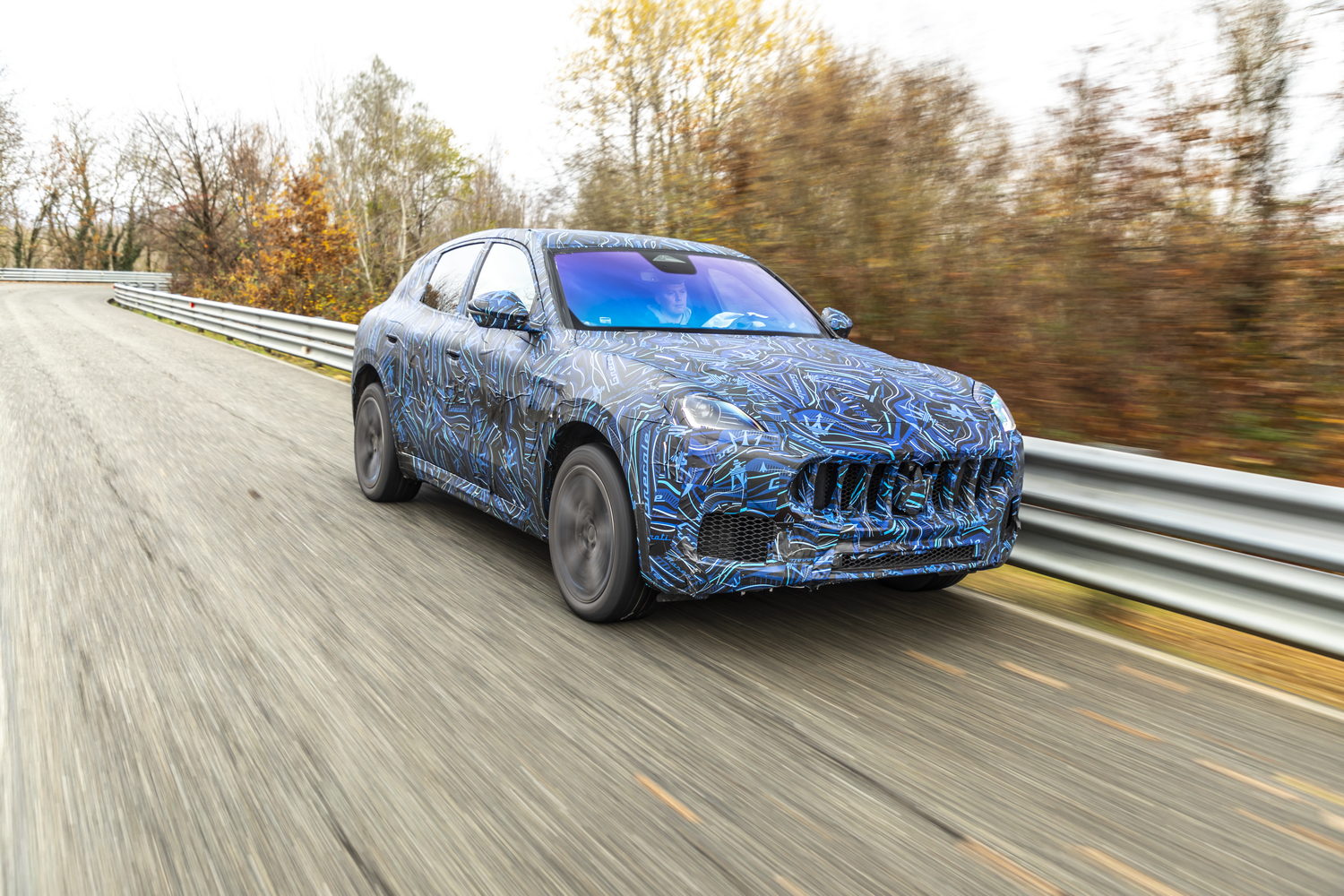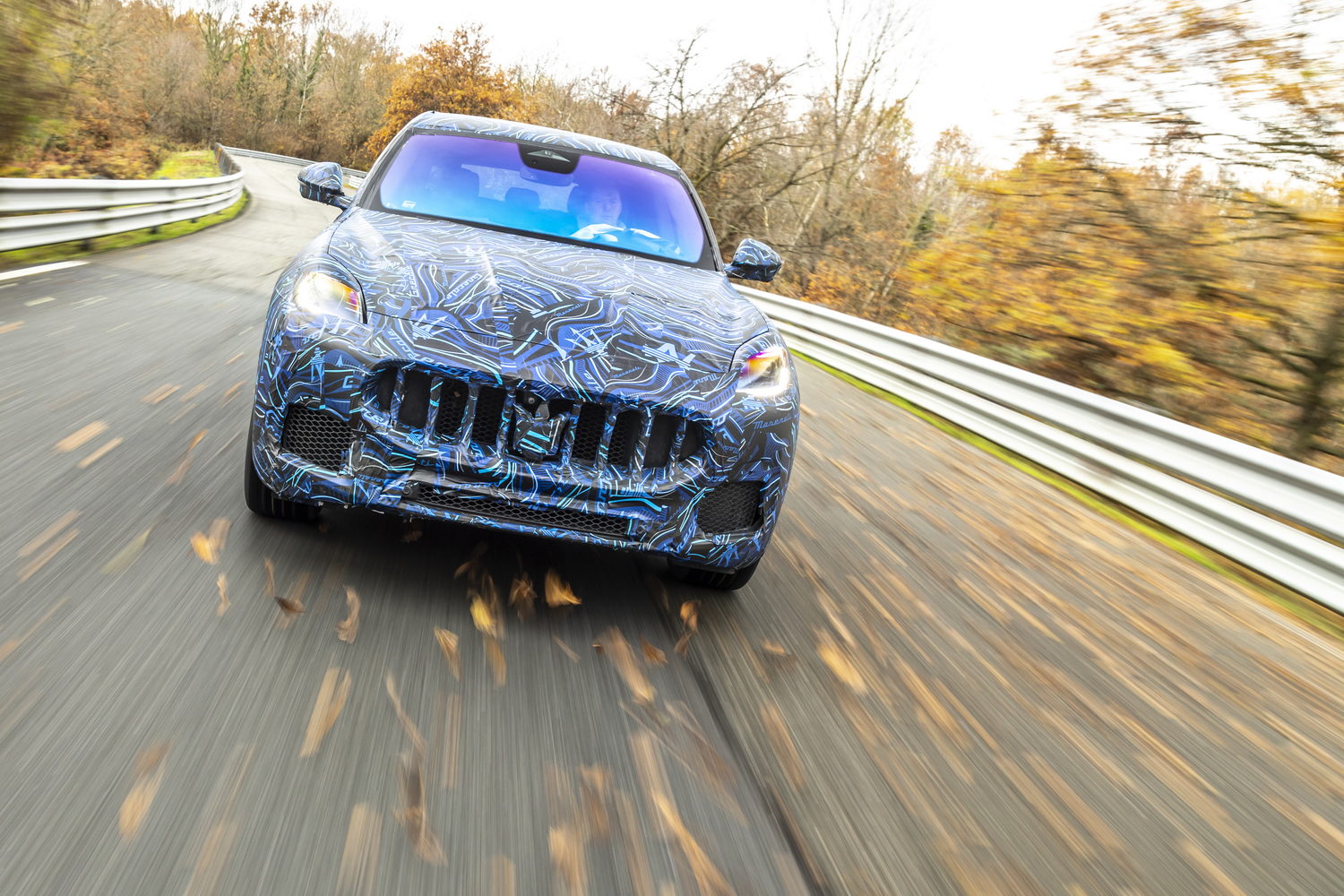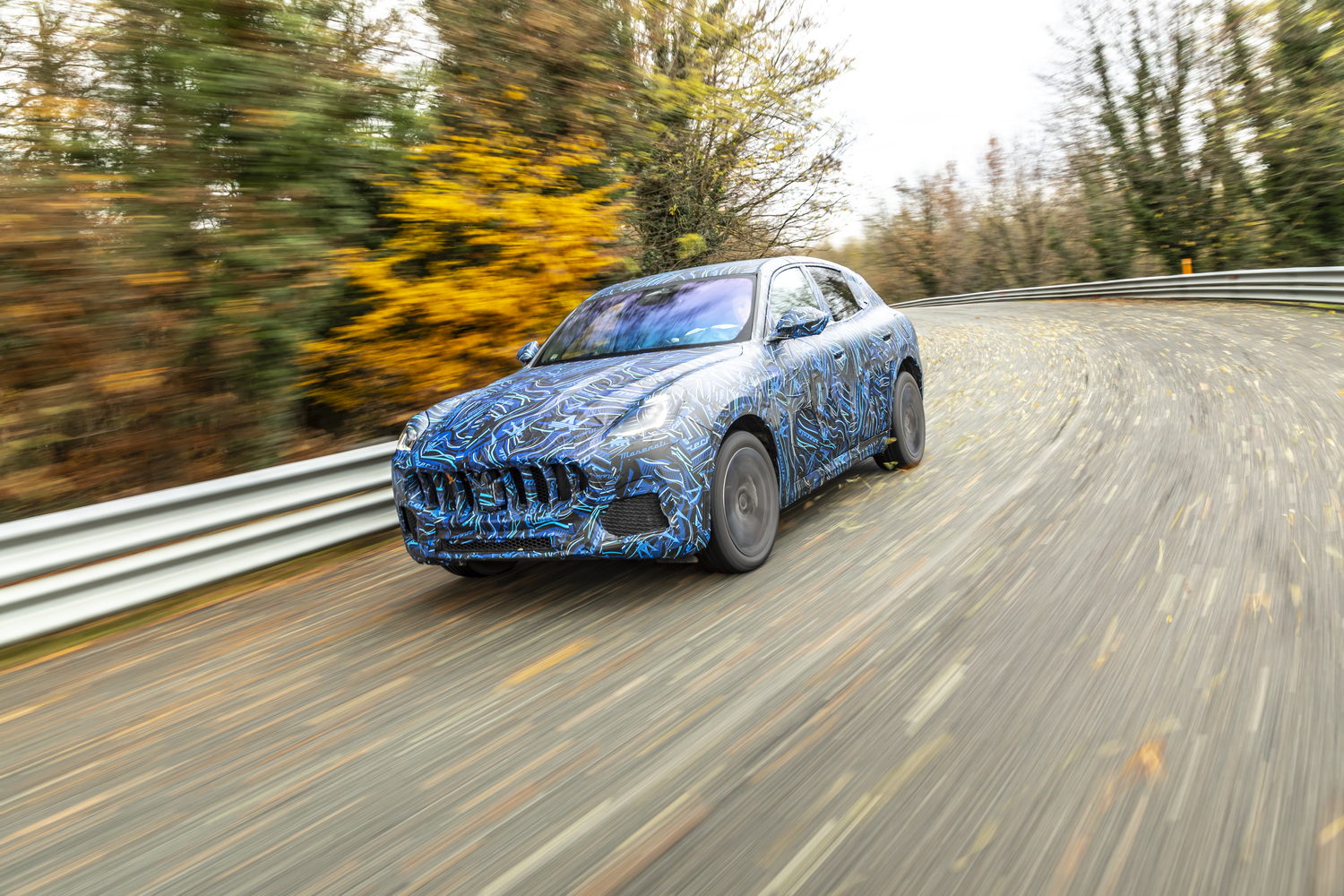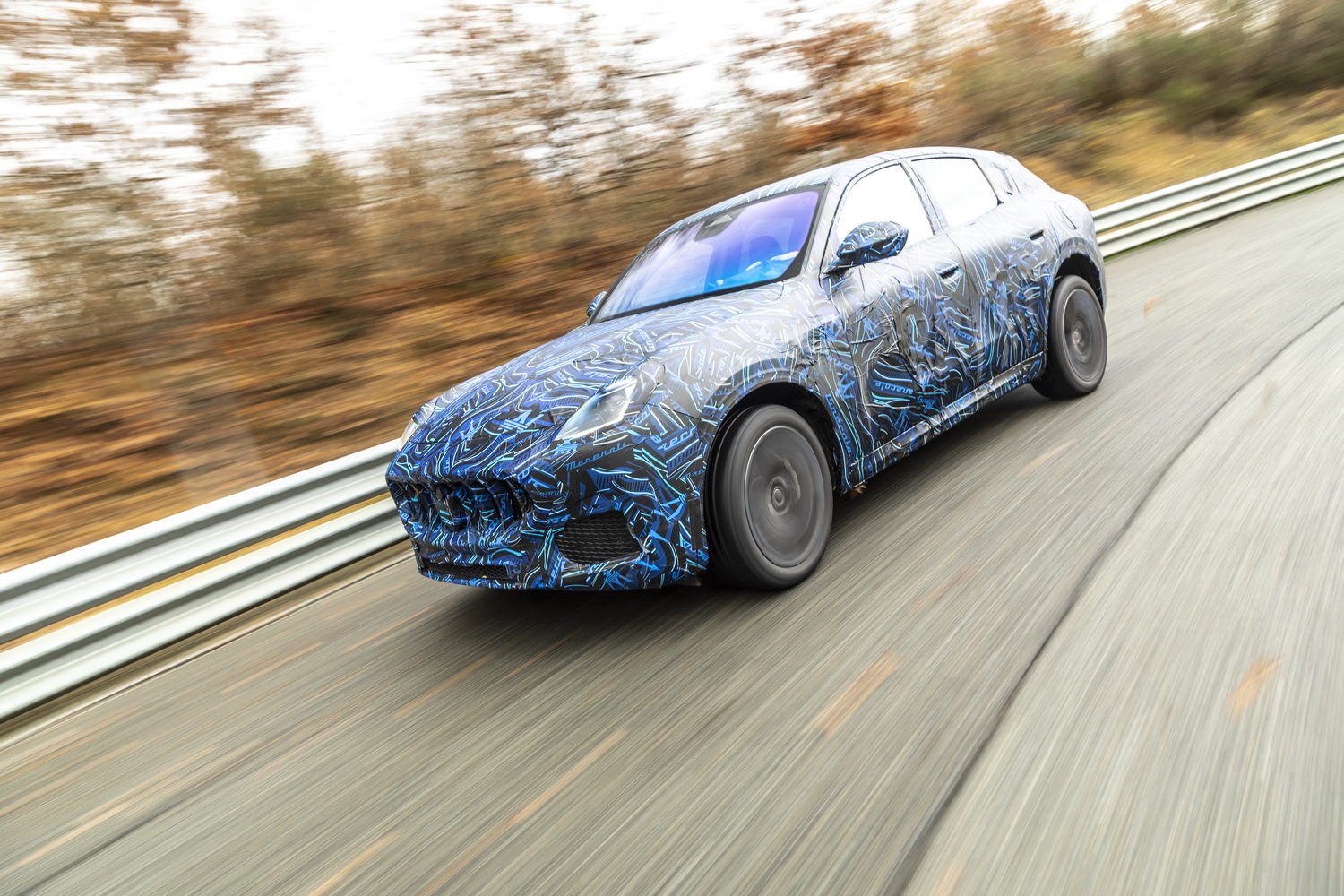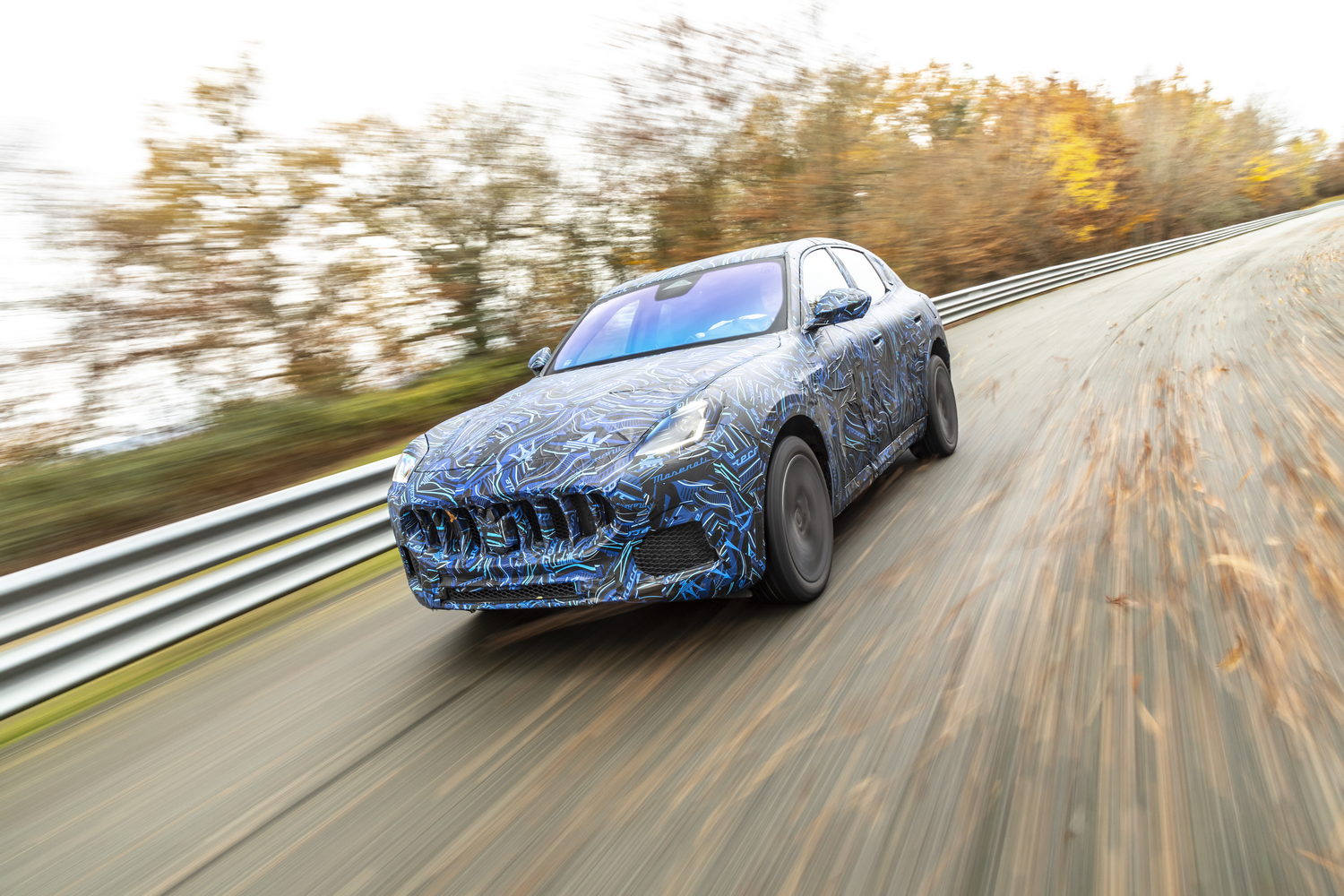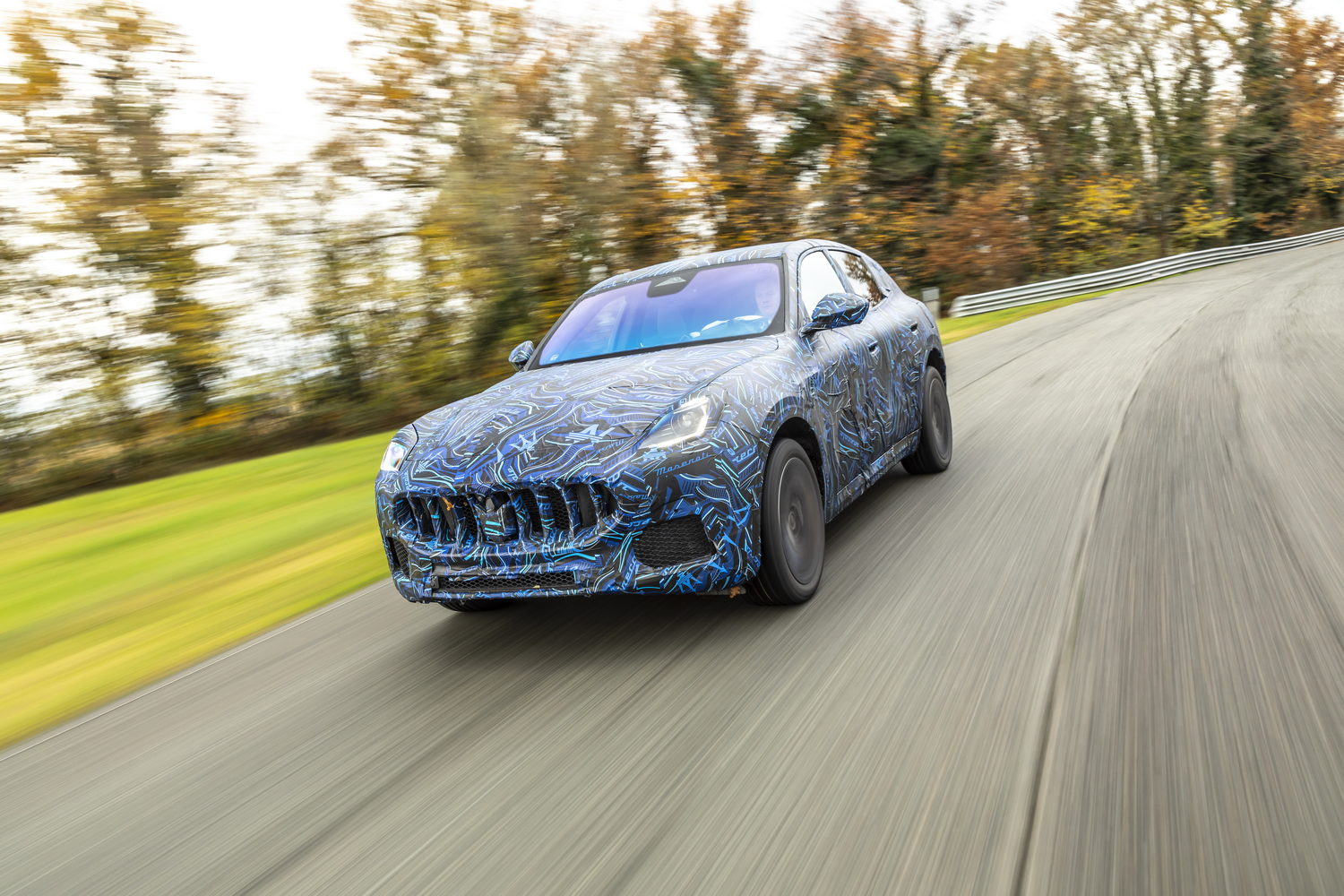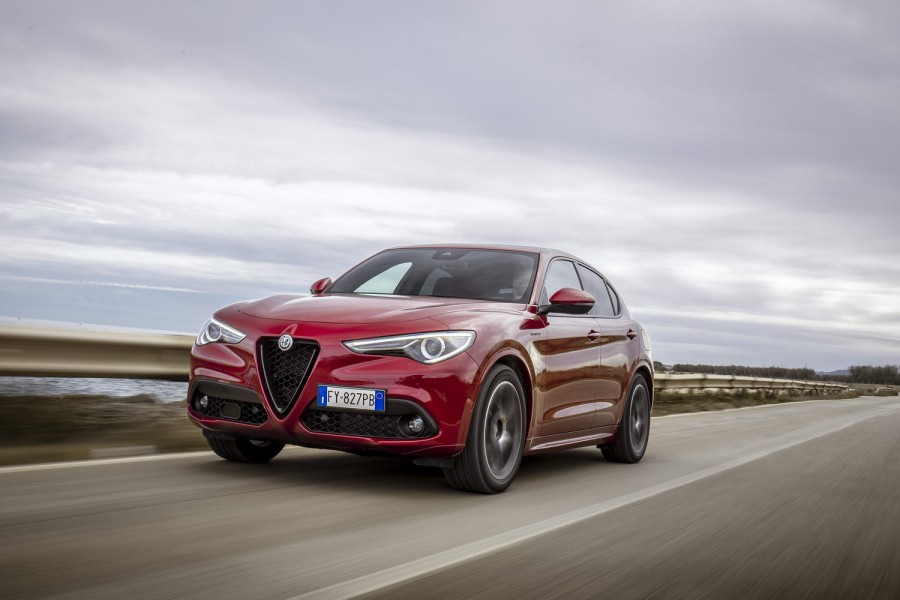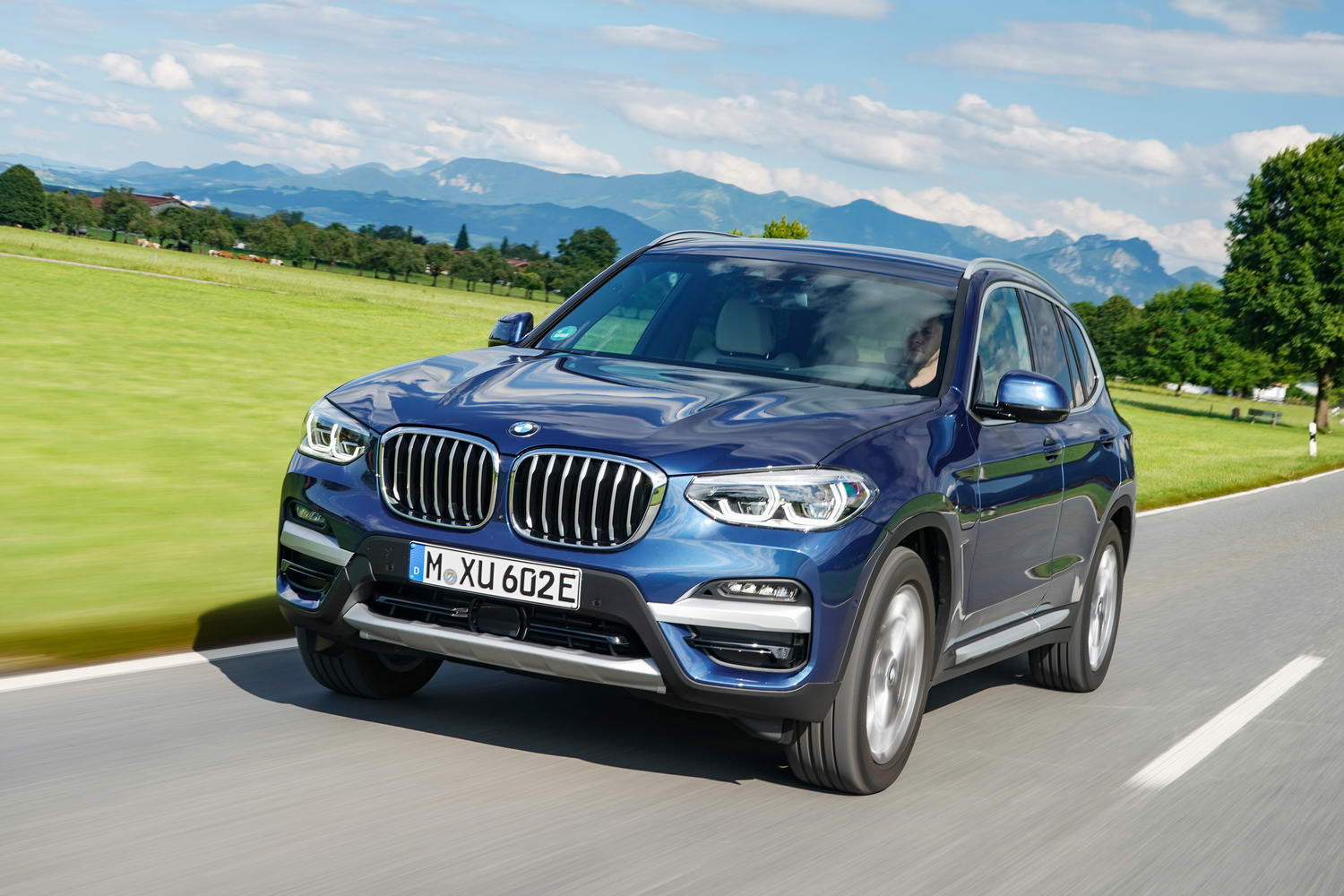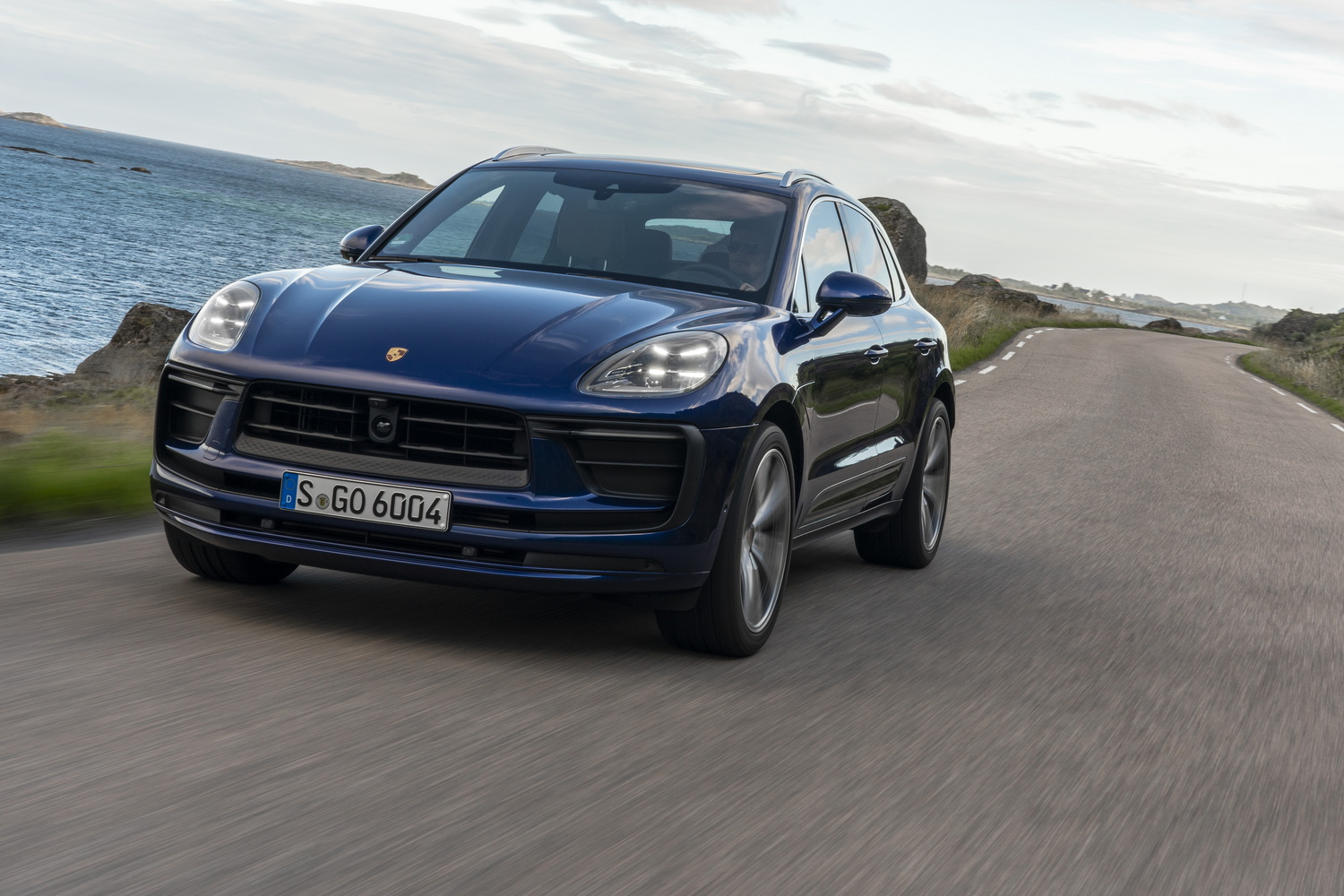The Maserati Grecale is an all-new five-seat SUV from the Italian brand. It's set to launch in 2022, initially with mild-hybrid petrol power as tested here, and is squarely aimed at the buyers that have been enjoying the image and dynamics of the Porsche Macan. The roll-out of the Grecale has been delayed by Covid-19 and the semi-conductor shortage so, to keep interest in the new car alive, Maserati allowed us early access to drive one of its engineering prototype vehicles at its Balocco proving ground in Italy.
In the metal
Until we see the exterior design and the finished Grecale cabin, we won't award it with a rating in this section, but we can tell you what we could glean from our time with the car. For starters, the Grecale is smaller than the Maserati Levante SUV - it's 159mm shorter and 43mm narrower, while the Grecale's wheelbase is 103mm shorter. Nonetheless, that still makes the wheelbase nearly 100mm longer than that of the Porsche Macan.
That can be felt in the back seats of the Grecale, which are notably spacious. Headroom is generous, too, though the middle passenger has to put their feet on a raised centre section. The rear seat backs split and fold forward using levers on the sides of the seat bases or in the boot itself. Maserati hasn't quoted a maximum luggage capacity, but has confirmed that the boot holds a competitive 535 litres when the rear seats are in use.
Up front, the prototype's new dashboard was covered up and photography of it was not allowed, but the cover was lifted for us to get a look at it - and it's a big step forward for Maserati. A 12.3-inch 'Ultra HD' touchscreen is integrated into the middle. It runs the Android Auto operating system and features Apply CarPlay connectivity, as well as a tab-based screen layout. A head-up display is optional and there's a set of new digital instruments ahead of the driver, too.
There are a few interesting new touches, as well, including the first ever digital clock to be fitted to a Maserati in the centre of the dashboard - replacing the usual analogue item. This isn't just a clock though, as its display can be altered to various outputs, such as a compass or G-force meter. Meanwhile, below the main touchscreen - and below a horizontal set of push buttons for the transmission - is a supplementary touchscreen, measuring 8.8 inches across the diagonal. This allows control of a myriad of functions, such as the climate control, lights, seats, etc.
The centre console is free from buttons and has loads of storage space built into it. Its minimal appearance is mirrored by simple door panels. The doors themselves are electrically opened with a button, while the exterior door handles are flush with the bodywork. There's an aerodynamic advantage to this design, but also a weight reduction according to Maserati's engineers.
Externally, the camouflage wrap of the prototype hides the detail surfacing of the Grecale, but it's clearly from the same school of design as the Levante. There are high-tech LED headlights flanking a pronounced and stylised radiator grille with a large Maserati trident badge in its centre. The trident motif appears in the design of the alloy wheels, too. The pictured car is riding on 20-inch rims. Some markets will receive 19-inch wheels as standard and there are 21-inch items available, too.
Driving it
It seems that Maserati has come up with a few sound tuning tricks for its four-cylinder engine's exhaust since we last tried it in the Ghibli Hybrid, as it starts up with a purposeful growl through its four outlets. The base hardware is the same as in that Ghibli, however, using a turbocharged 2.0-litre, four-cylinder petrol engine and 48-volt mild-hybrid technology, as much to boost performance as it is efficiency. So, there's a 'Belt Starter Generator' (BSG) that takes on the role of starter motor and alternator for a start. That means quicker restarting of the engine and the ability to charge up an extra battery, mounted under the boot floor. In turn, that can power an electric compressor (or 'eBooster' in Maserati-speak) to help negate any lag from the actual exhaust-driven turbocharger.
That all sounds very clever, and it is, but you can't feel any of it in operation on the move. Perhaps that's a good thing. Maximum outputs are quoted as 300hp and 450Nm and, while the former figure is down on the peak power of the Ghibli Hybrid, the latter is produced much lower down the rev range. That means the Grecale feels tractable and effortless to drive around at normal speeds, with no more than a rumble from the beefy exhaust.
There will be three different levels of suspension sophistication, starting with steel springs and dampers using Frequency Selective Damping (FSD), which is an automatic system built into the shock absorbers themselves. Next up is optional adaptive damping, again paired with steel springs. This adds three baseline levels of damping that are altered depending on driving mode selected (Comfort, GT or Sport).
The top level - as tested here - adds air suspension to these adaptive dampers. The air springs allow for automatic levelling and altering of the ride height, leading to the addition of an extra driving mode - Offroad. Two different ride height increase are possible - +20mm or +30mm. On the flip side, the air suspension also allows a ride height reduction to reduce aerodynamic drag. The driver can select 'Aero 1' for a 15mm drop, while a 30mm drop happens automatically above speeds of 130km/h. Aero 1 is selected by default when you choose the Sport driving mode.
The driving modes also alter the split of torque to the front and rear wheels, though Maserati has given the Grecale a distinct rear-drive feel. That's underscored by the fact that a maximum 50 per cent of engine output can be sent to the front wheels, while up to 100 per cent can be sent to the back, depending on conditions and the driving mode. There's an open differential on the rear axle by default with the option to upgrade to a mechanical limited slip item. A fully variable electronically controlled differential is under development, too.
On a greasy wet test track, designed to mimic country road conditions, we experimented with the various settings. In Comfort mode, the suspension is at its softest, the ESC stability control is at its most alert, the power steering at its most comfortable, the eight-speed automatic gearbox at its most relaxed and a good deal of torque is sent to the front wheels. There's exceptionally good communication through the steering to your hands, clearly indicating where the levels of grip are. Push a little beyond them in this drive setting and these damp conditions and safe, stabilising understeer is the order of the day.
The body control clearly ramps up a notch in the GT setting as the damping force is increased, but the Grecale never feels too firm. Response to the accelerator usefully sharpens up in the GT mode, too, and it's clear that much more of the engine's output is going to the rear wheels. Once turned in, the rear can be made slide smoothly if desired. The feedback through the steering telegraphs what's happening and allows you back off and keep things neat or explore the limits of grip a little more. The stability control system shortly intervenes, but it does so in a distinctly smooth fashion.
That's backed off a little more in the Sport setting, allowing the Grecale's chassis really come alive and it's genuinely huge fun to drive. Through all this, the automatic gearbox is pretty seamless. In the Sport mode it does bang in the gears with a little more conviction at times and, if you press the D/M transmission button, you can choose fully manual operation, using the deliciously tactile (and super-long) gearchange paddles behind the steering wheel.
An active exhaust helps make the four-cylinder engine sound more interesting when you're pushing on, but ambling about it's never intrusive, and indeed the car feels commendably refined at regular speeds. The double-glazed side windows no doubt contribute to that. It's not yet clear if they're standard across the line-up.
What you get for your money
There's no sign of a Maserati dealership opening up in Ireland, so for now at least, interested buyers will have to pay a visit to Charles Hurst Maserati in Belfast. Pricing hasn't been set yet and indeed we don't know what the CO2 rating will be for this model. If the Ghibli Hybrid is anything to go by, it won't be especially parsimonious with its fuel.
Nonetheless, there is a fully-electric version of the Grecale on the horizon, under the 'Folgore' (lightning) Maserati umbrella, and that could be a different story altogether. At the other end of the eco car spectrum, it's expected that there will be at least one high-performance petrol version of the Grecale powered by a variant of the new twin-turbocharged 3.0-litre V6 that debuted in the Maserati MC20 sports car. It wouldn't be out of this world to suggest that it might be called the Grecale Trofeo.
Summary
Until the electric variant is released for sale, the Maserati Grecale SUV will be of minority interest in Ireland. Nonetheless, our experience in the prototype reveals that it could have what it takes to compete head-to-head with such an esteemed car as the Porsche Macan. The Grecale manages to marry everyday usability and practicality with underpinnings that aim to please the keen driver, too. As a sign of things to come from Maserati, this is really encouraging.

